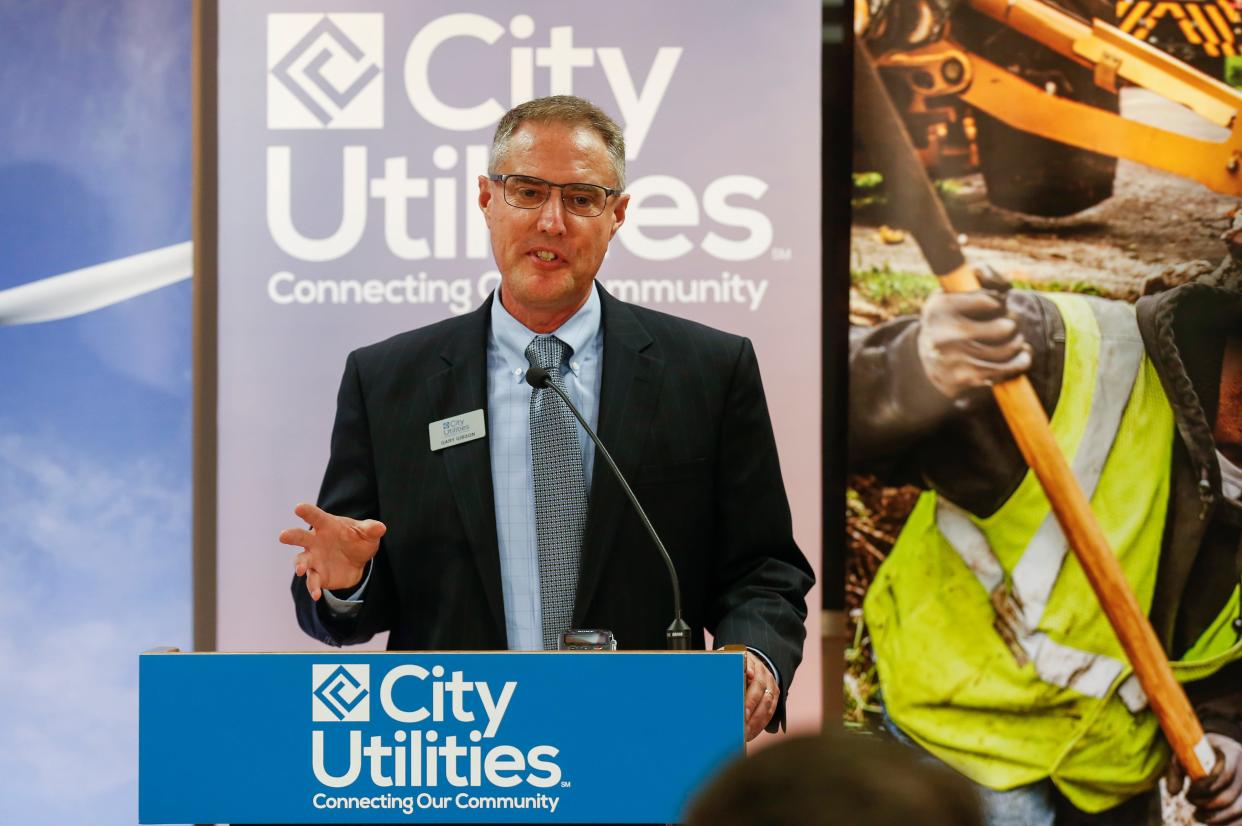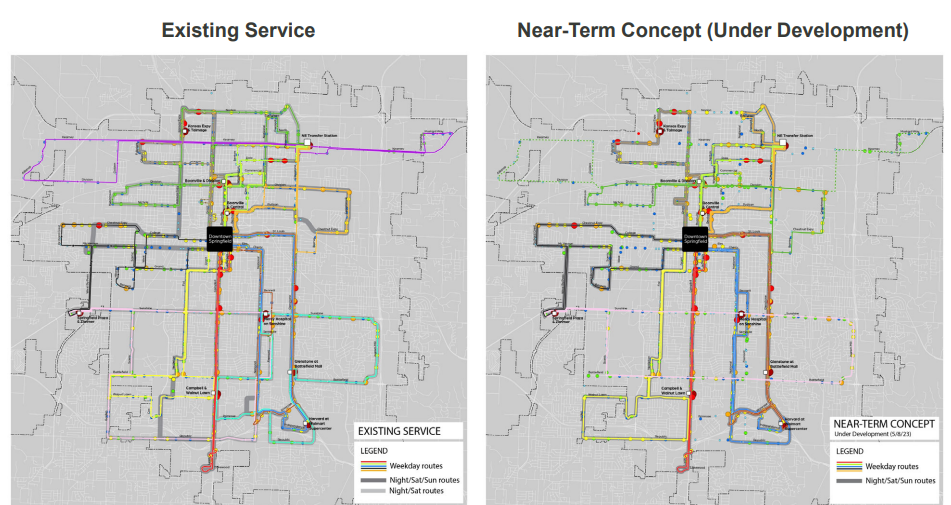Are these HomeServe advertisements from City Utilities? Officials explain partnership

Over the past year Springfield homeowners may have received in the mail an advertisement from repair warranty company HomeServe, although most could be forgiven for thinking the warning came from City Utilities.
That is because City Utilities has partnered with the private company and allowed them to use their logo. At an annual joint meeting between the CU Board and Springfield City Council, CU staff defended the partnership as an attempt to educate homeowners about their responsibility on their property.
CU Chief Customer Officer Brent Baker explained that customers are often confused that repairs to or replacement of the exterior water and electric lines that connect their home to utility systems are not covered by City Utilities. These unexpected repairs can "equal thousands (of dollars) that the customer doesn't have."
To address this confusion and educate the public on their liability for repairs for certain utility damage, City Utilities partnered with HomeServe last year to provide supplemental home warranties.
"We partnered with something that we thought would be good," Baker told city officials. "Most customers are not aware they have this responsibility and then they are blindsided."
The service plans, priced at $4.49 a month for water service line coverage and $4.49 a month for exterior electrical coverage, provide up to $10,000 for covered water service line repairs and up to $5,000 for covered exterior electric repairs.
More: Construction is nearing its one-year anniversary. When will Springfield's Buc-ee's open?
According to Baker, more than 20 claims have been covered by HomeServe so far, saving CU costumers $48,777.
Under questioning from several councilmembers, Baker admitted that some City Utility customers have been confused by the marketing of the services — believing them to be an official recommendation from City Utilities of their property.
"We are following up to remind you of your responsibility and coverage that is available for your exterior electrical line," reads one of the letters with the City Utilities logo. "Because certain exterior electrical components on your property, including the weatherhead, riser, insulator, meter base and service entrance conductor, belong to you, you are responsible for paying for any needed repairs for these components. Your exterior electrical system may weaken and break over time due to damage caused by normal wear and tear, including aging and ground shifting."
The letter later explains the coverage is optional and HomeServe is partnering with City Utilities.
Baker emphasized the coverage is not required and may be unnecessary in many cases. He has fielded many calls in the past year concerning confusion over the partnership.
"We're not doing this because we think you have to have this. We're doing this because it is important for some customers," he said. "These are fair rates but if your home insurance covers something like this, please explore that."
In a statement, CU spokesperson Joel Alexander added they have not given any personal information of their customers to HomeServe.
"While we provided our logo, we did not provide any customer information. The information used for their mailings was collected from public records based on zip codes in our service territory. We’ve had several calls on this and since that method was used for mailings, many who have received the letter are not customers of CU," Alexander wrote.
Higher utility rates on the horizon
City Utilties at the meeting also noted their user base can expect a rate increase soon, the first in several years. City Utilities CFO Amy Derdall said they considered rate increases in 2020 before COVID-19 and "we decided it wasn't the right time." But given high inflation in recent years, the rates now need to rise.
"Inflation came and we have to respond," she said.
According to Derdall, the average combined increase of all the utilities provided would amount to $15 a month by the end of 2026.
Bus system revamp

City Utilities also outlined at the Wednesday meeting ongoing efforts to revamp Springfield's bus transit system.
Rather than operating under a regional transit authority, Springfield's public transit system is one of the few in the nation to be operated through a municipal utility company. CU last made significant changes to Springfield busing after a similar study in 2012, which led to construction of a new downtown transit center in 2016, increased bus sizes, and the addition of three new night routes.
According to Baker, preliminary results from the survey and stakeholder meetings show an interest in increasing the frequency of service at bus stops but not much appetite for fare-free busing.
Top priorities of survey participants included providing access to essential services for those with limited mobility options, access to jobs and services, and offering an affordable transportation option compared to owning a car.
Reducing or eliminating bus fares ranked low on the list of priorities, with only 24 percent of respondents listing it as one of their requests.
"We need to get the highest amount of riders in the core of the city as conveniently as possible," Baker said. As a result, City Utilities is considering removing lesser used routes and adding more frequency to the most-used routes.
More: Springfieldians to see more e-scooters in more places as city expands program this summer
Once in place, the revamped routes would have bus service every 15 to 20 minutes, instead of much longer wait times riders have now for bus transfers. They also hope to make the system less confusing, with buses to and from an area both being on the same line.
According to Baker, the "elephant in the room" is the debate around a free or reduced fair, which has seen some activism around the issue in recent years. City Utilities is exploring a pilot program to implement free fare under certain conditions. Such a program would likely be means-tested and only apply to those of certain incomes, ages, disabilities or veteran-status.
Currently, a single fare ride on a Springfield bus costs $1.25, with a 10-cent surcharge for each transfer. Riders can also purchase 60 rides up front for 75 cents a ride.
This article originally appeared on Springfield News-Leader: City Utilities addresses partnership with home warranty company HomeServe

